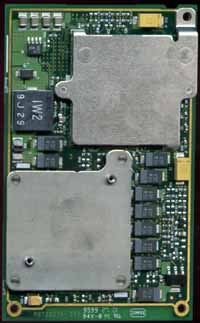Intel Mobile CPU & Chipset Roadmap - November 2000
by Matthew Witheiler on November 23, 2000 6:31 PM EST- Posted in
- CPUs
The new chipset: Almador-M
Just as in the desktop's Tualatin-256 case, the mobile Tualatin will require a new chipset. This chipset comes in the form of a mobile version of the desktop chipset that Intel canned: the Almador-M. Slated to arrive in the third quarter of 2001, along with the Tualatin, the Almador-M chipset is the direction all Intel based notebooks will take.
The Almador-M chipset comes with quite a few features that make it more powerful than the currently available 440 BX mobile chipset. First off, the Almador-M will finally allow for notebooks to handle both a 133 MHz front side bus and 133 MHz SDRAM support. This will finally allow for front side bus speed increases in notebooks which will begin to bring these systems up to speed. As we have shown time and time again, increased front side bus speed usually equates to increased performance.
In addition to an increased front side bus speed, the Almador-M chipset will include integrated graphics, most likely based off of Intel's current i752 chipset. As we have seen in the past, the Intel integrated graphics chips perform sub par when compared to other solutions. The same will hold true in the mobile market. With the announcement of NVIDIA's GeForce2 Go and rumors of ATI also working on a Radeon based mobile part, there is no way that a i752 based video solution will prove attractive to 3D notebook buyers. It is therefore odd that while the Almador-M has AGP port support for an external (nonintegrated) AGP 2x and 4x graphics chips yet Intel will only release the Almador-M with the integrated graphics solution. This may end up hurting system builders in the long run, as the integrated video will increase chipset price which will only be inflated more by the use of a third party video controller. The new platform will also have a new I/O controller hub, named ICH3-M. This new controller will add support to USB 2.0, but other than that not too much else.











0 Comments
View All Comments